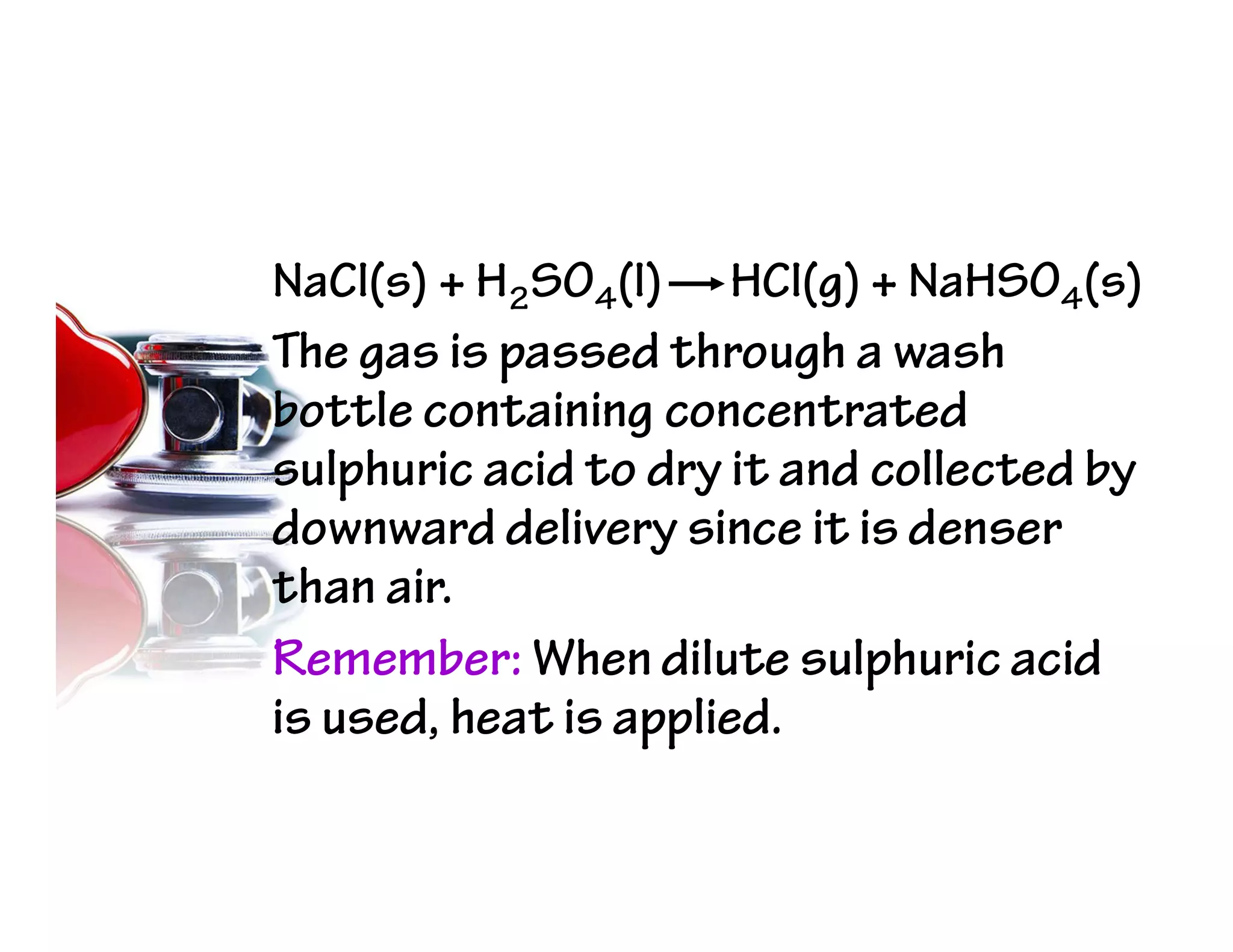Chlorine and its compounds are discussed. Chlorine can be prepared in the laboratory by reacting concentrated hydrochloric acid with manganese(IV) oxide or potassium manganate(VII). Chlorine is a greenish-yellow gas that is denser than air and acts as a strong oxidizing agent and bleach. It reacts with many metals and non-metals to form chlorides. Common uses of chlorine include water disinfection and manufacturing of bleaches, plastics and pesticides.


































































































